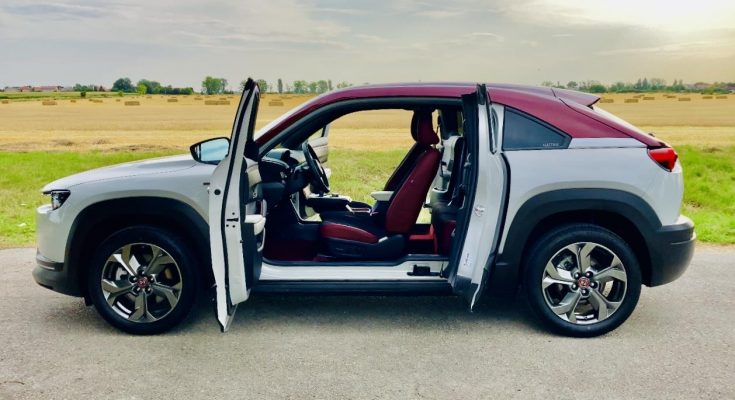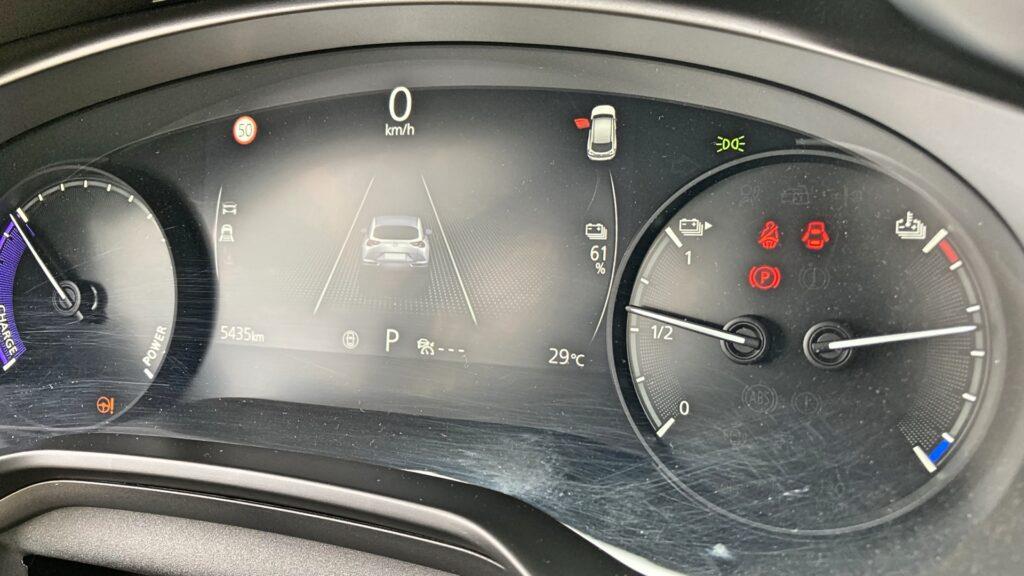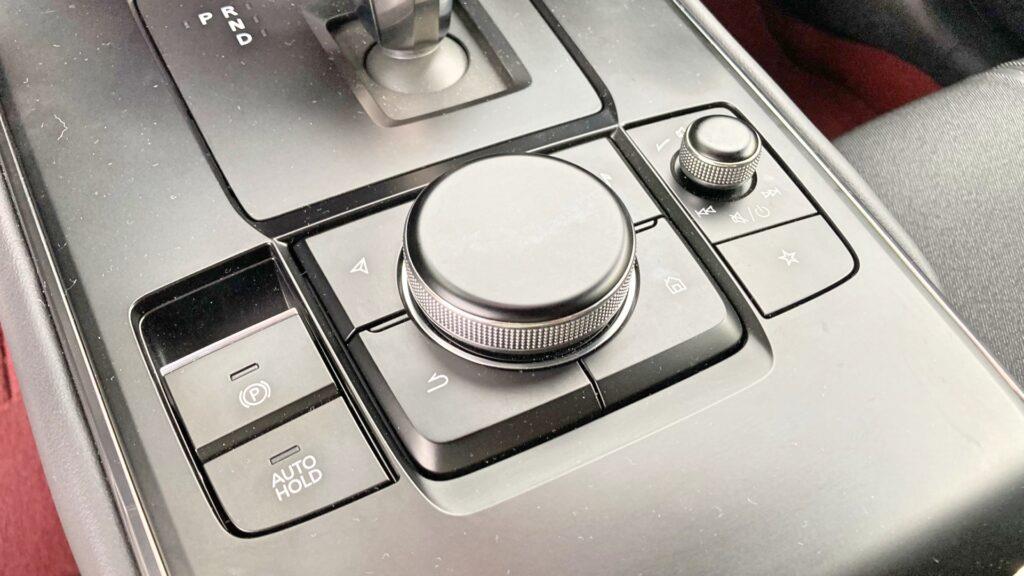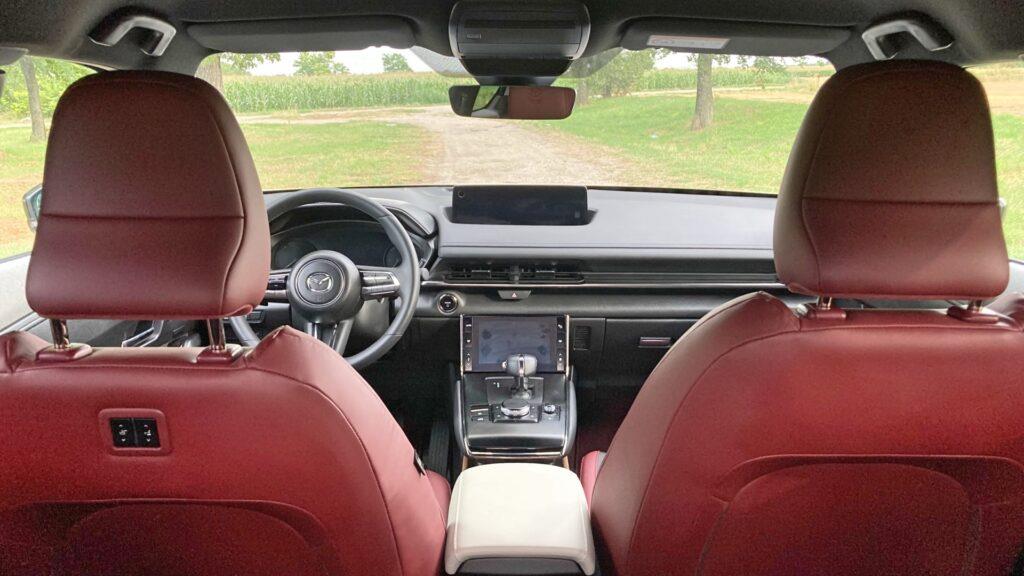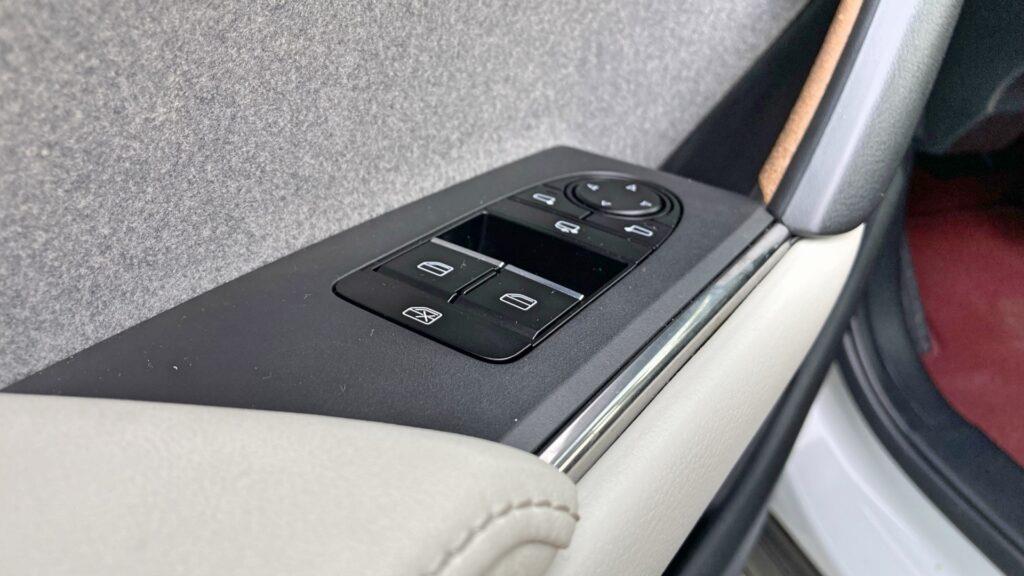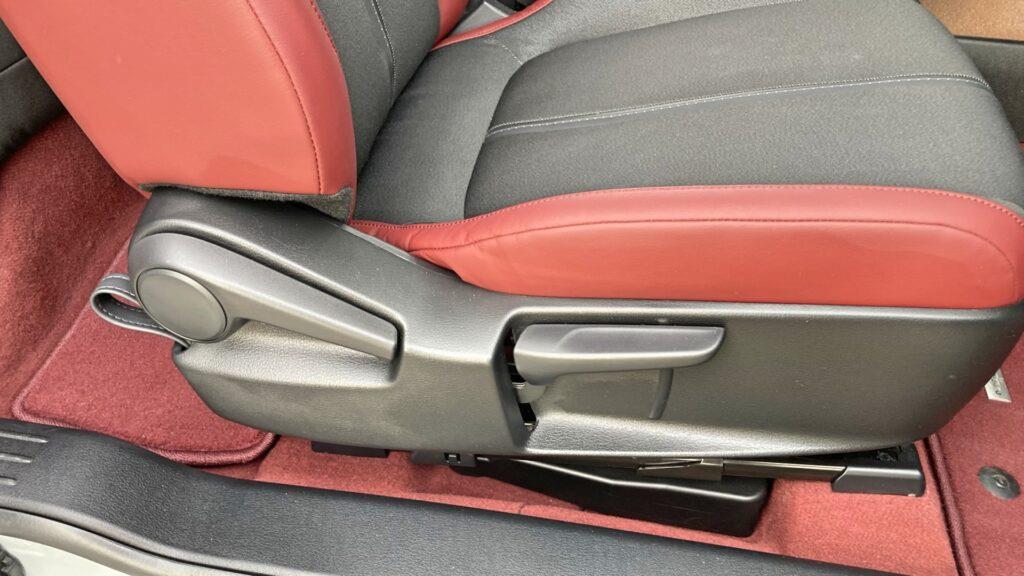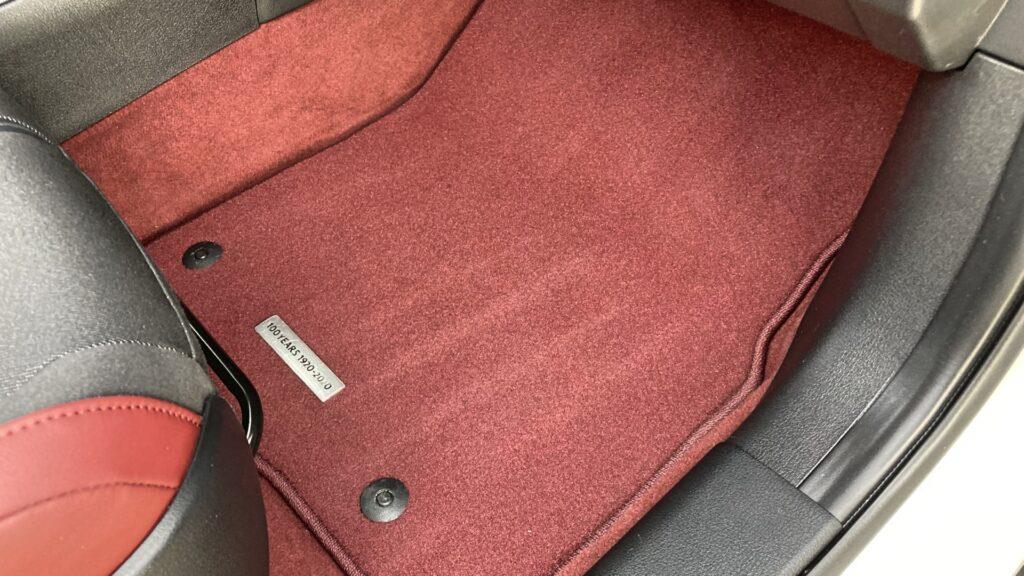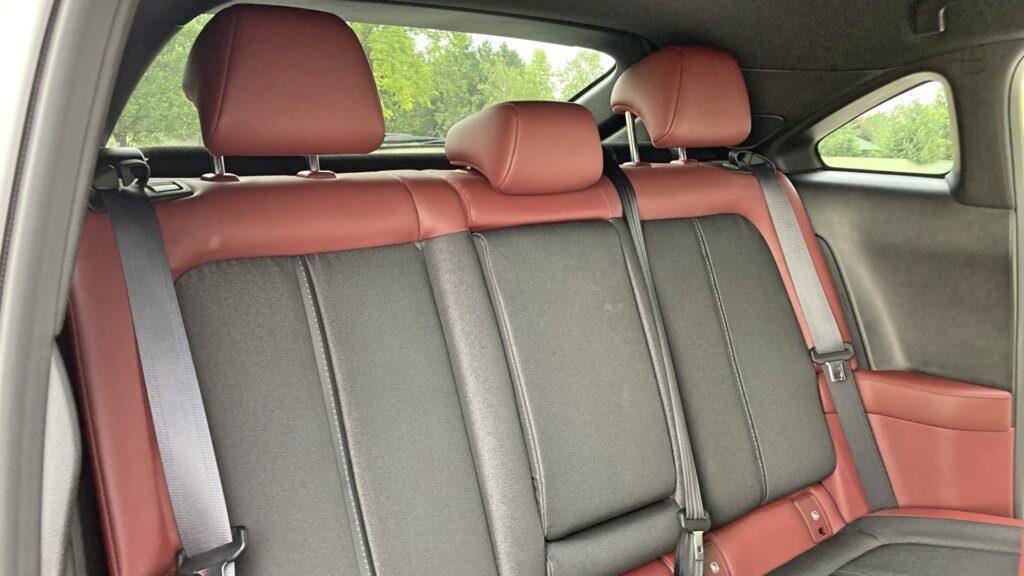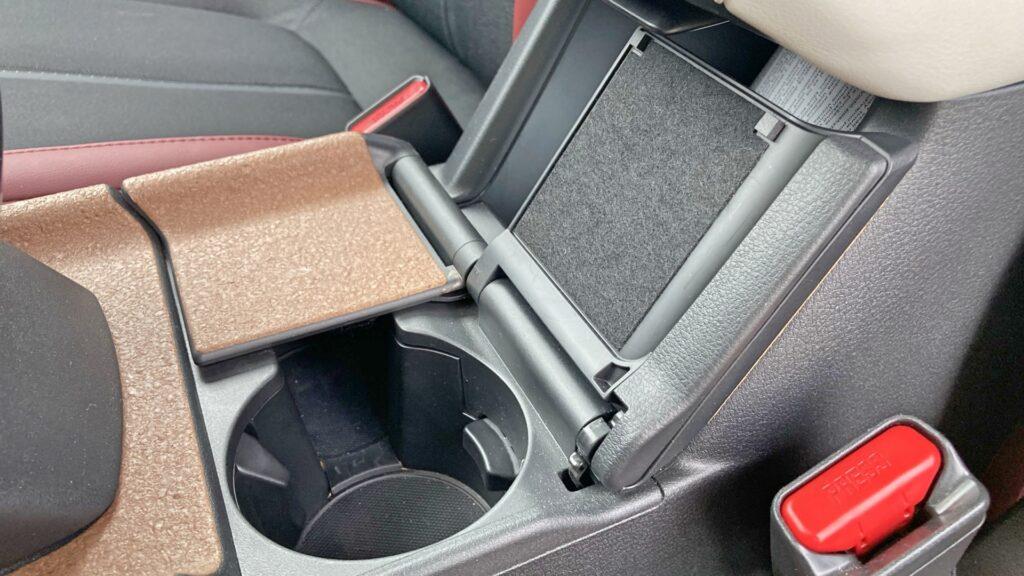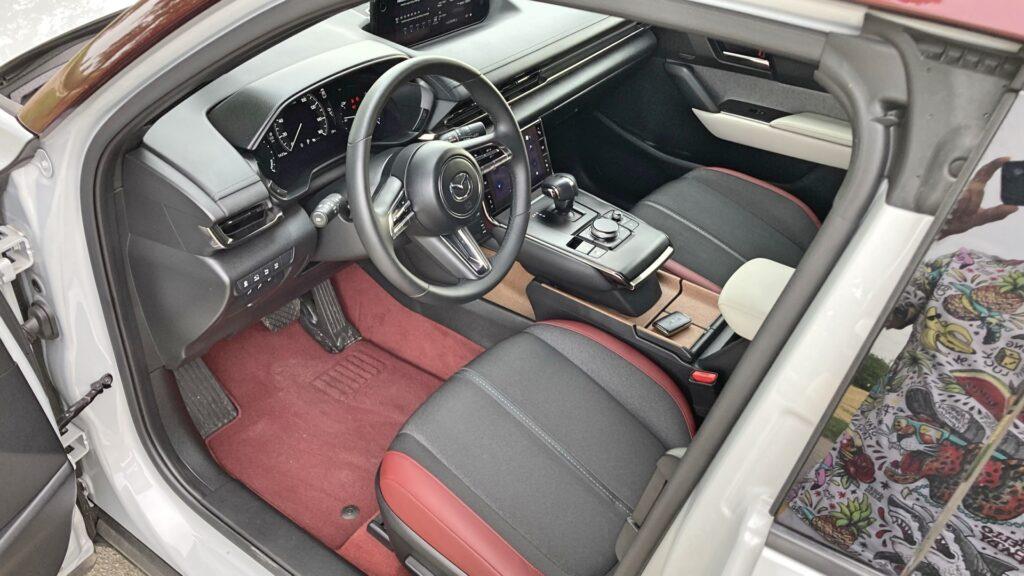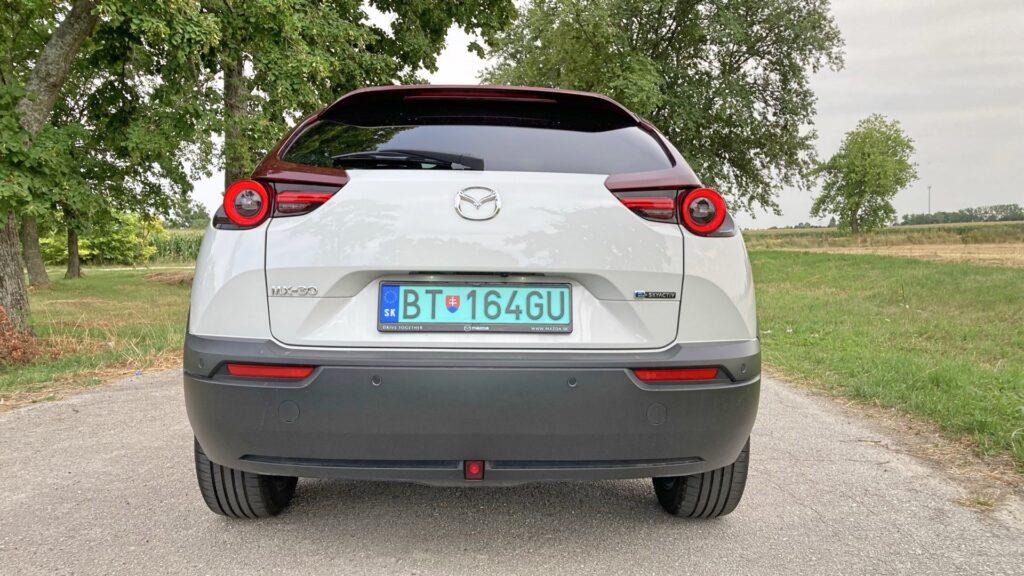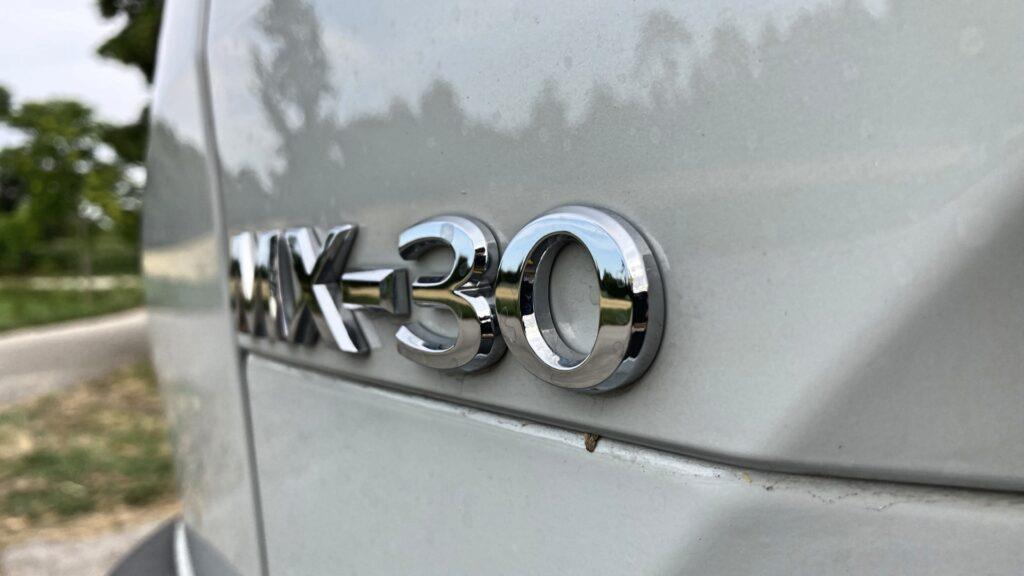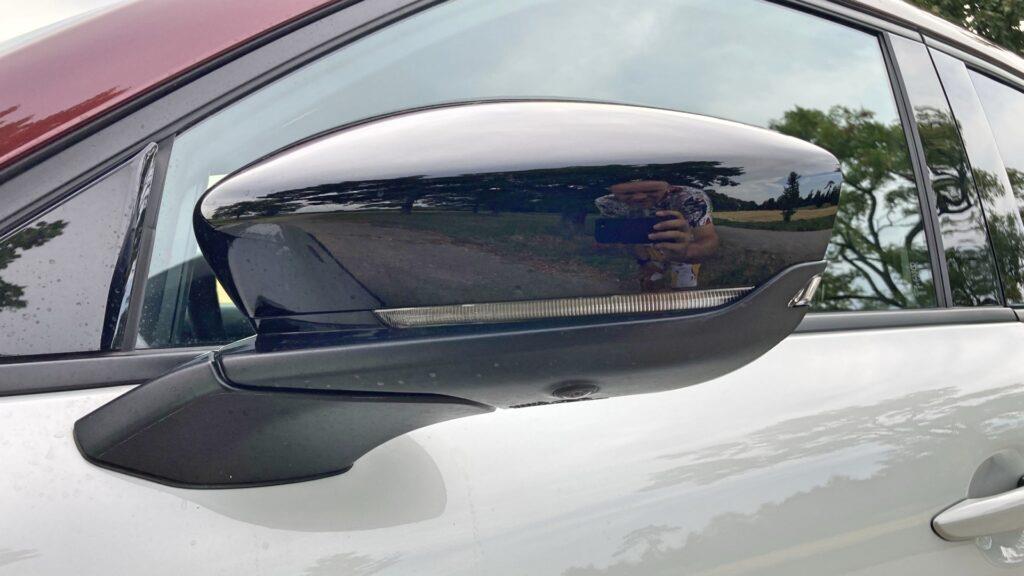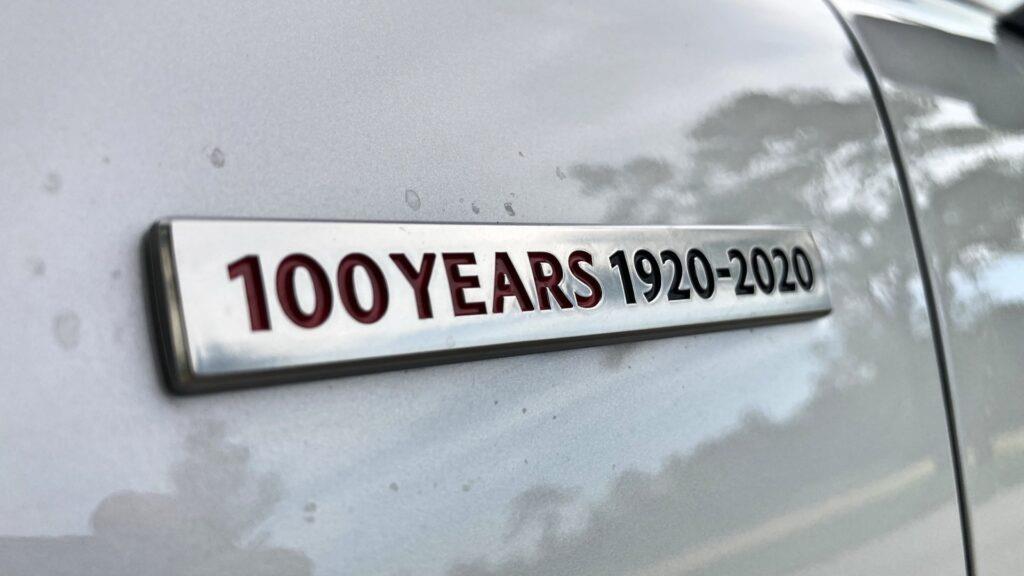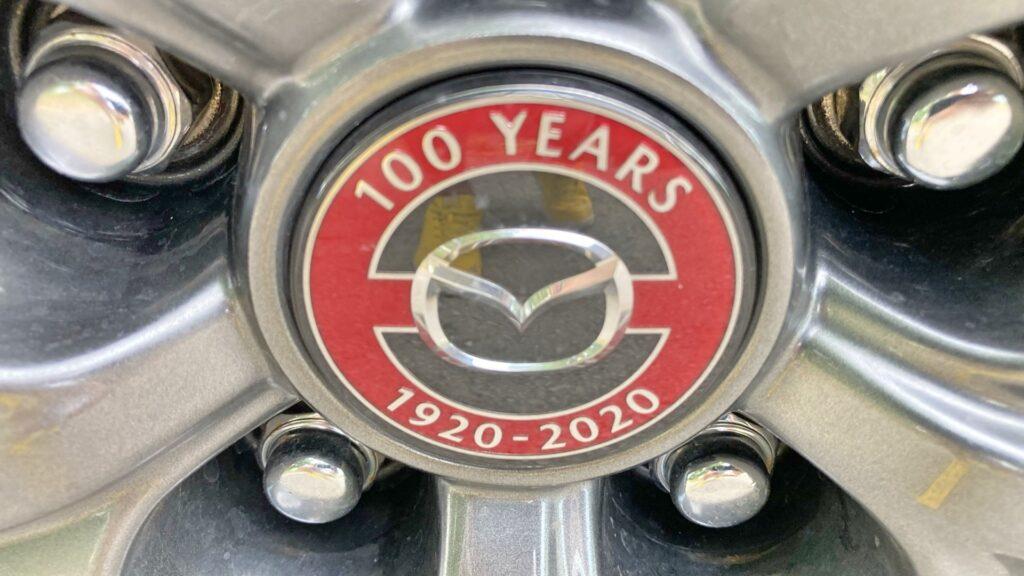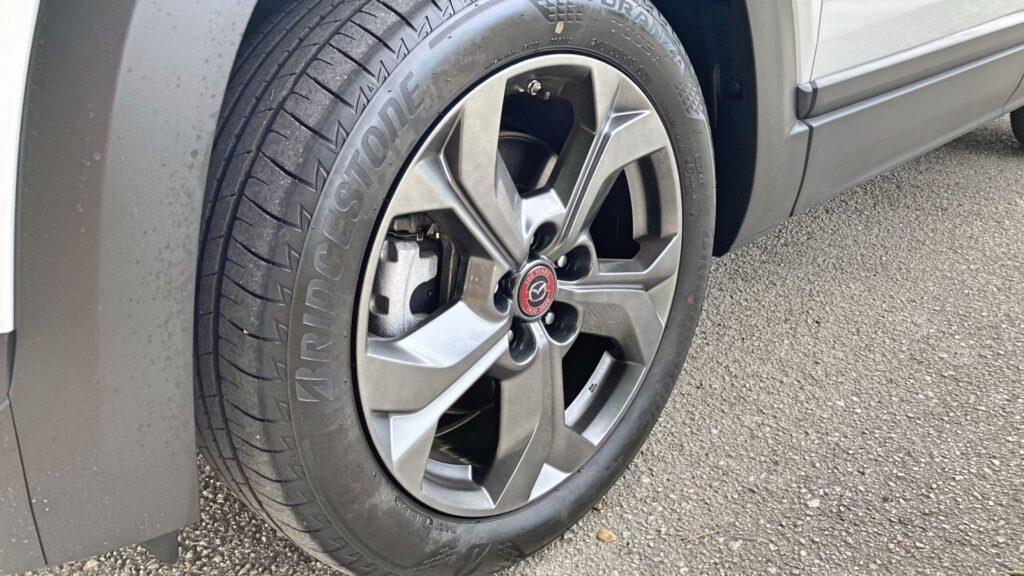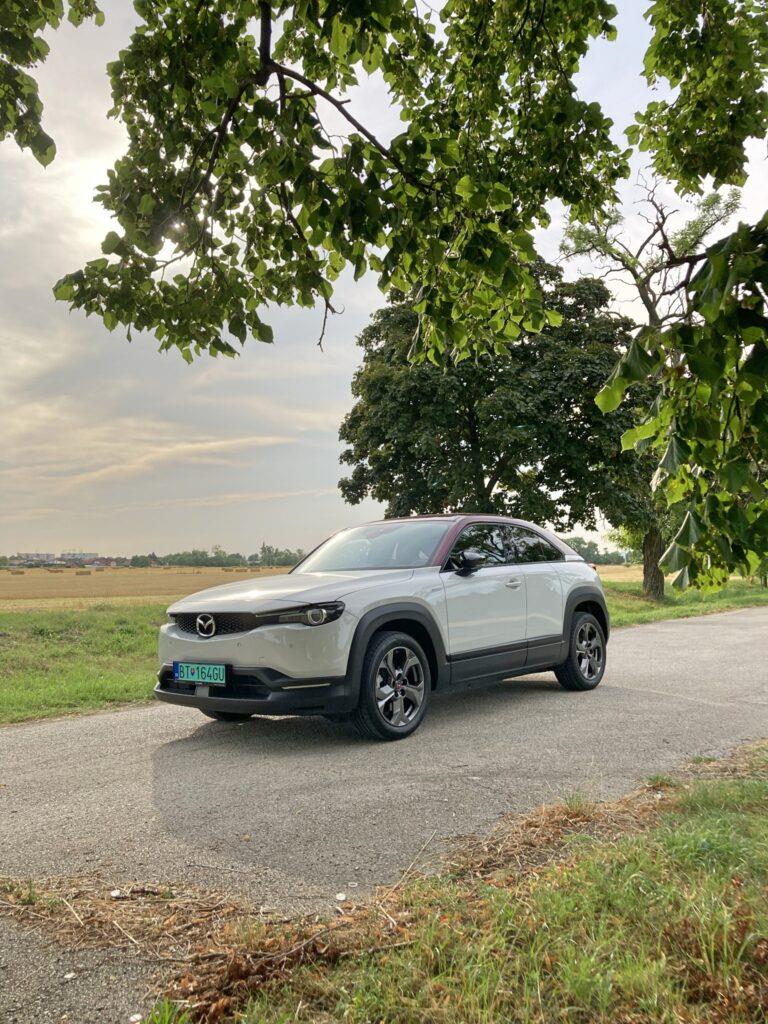Two trends still resonate in the current automotive world: crossovers and electric cars. And none of them can be avoided. Mazda celebrated 100 years of existence last year and took a very unconventional approach to its entry into the electric era.
The Mazda MX-30 is definitely an electric car that has an original design, the inspiration of which can be found in the history of the brand. In particular, the shape of the roof was inspired by Mazda's first car, the R360 Coupe. The Mazda MX-30 is thus a kind of cross between an SUV and a coupé.

One of the principles when designing the Mazda MX-30 was to make it as similar as possible to traditional Mazdas, so that customers of the brand do not have to get used to something completely new. Although it has a slightly more decent mask than other current Mazdas, it otherwise has many similar design elements and does not look like an electric car at first glance. This is mainly due to the high front, which is similar to the Mazda CX-30 , with which the MX-30 shares a platform. So it is not an electric car built entirely from the ground up.
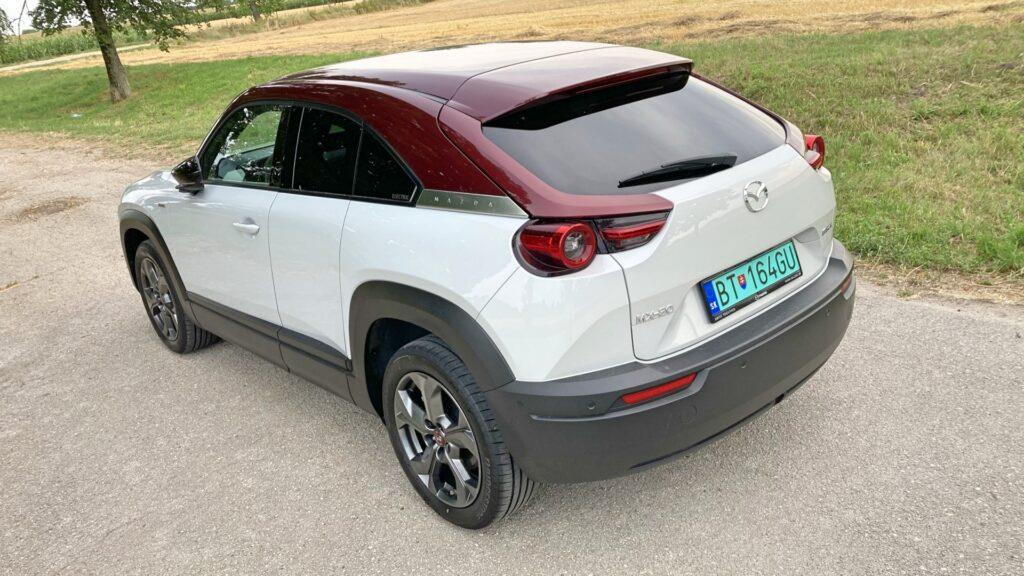
But what makes it significantly different from other models is the shape of the roof, which is lower and slopes towards the back in coupé style. At the rear, it blends beautifully with the taillights, giving the MX-30 an unmistakable look. Not only in the shape of the roof, however, can you see inspiration from the already mentioned R360 Coupe model, but it is also supported by the possibility of two-tone paintwork, which also has characteristic colors for the limited edition for the centenary of the car company.
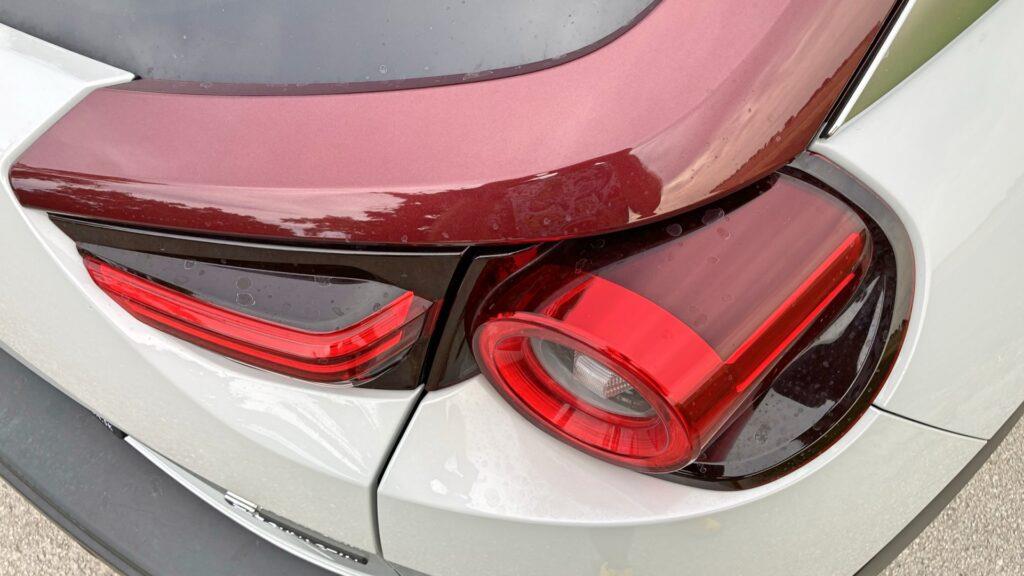
As I already wrote, the Mazda MX-30 stands on a platform based on the Mazda CX-30. However, it has batteries stored in the floor, similar to purebred electric cars. But the engine is classically in the front under the hood and drives the front axle. Thanks to the storage of the battery, the center of gravity is very low, despite the higher chassis, and the designers managed to achieve a weight distribution of almost 50:50, which also helps the very good driving characteristics. However, it is a shame that even though there is a dizzying amount of space next to the tiny electric motor, the designers did not make a compartment there (for example for cables) so that they do not have to be lying around in the trunk. Considering the size of the car, the battery has a relatively small capacity, a weaker 35.5 kWh, and the usable capacity is even lower.
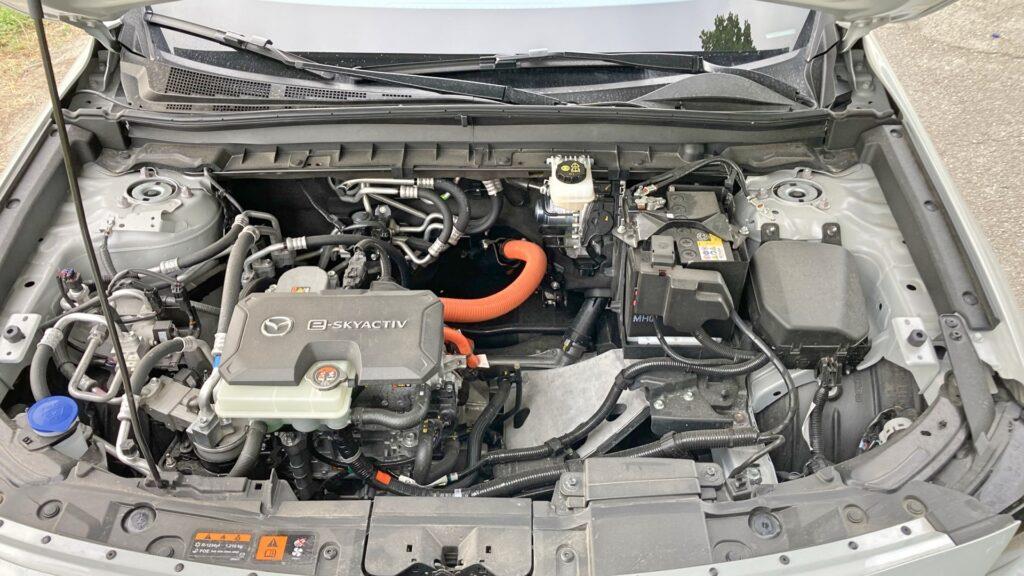
Even in the interior, you can see the effort to make the MX-30 not too different from other models. It is carried in a similar style as, for example, the aforementioned CX-30, and very high-quality materials are used here. The interior is also pleasant in terms of ergonomics. For example, the gearbox selector resembles a classic automatic gear lever and is very well placed near the steering wheel, where it is easy to reach. Compared to other models, however, there are completely different details, such as the used cork on the storage spaces and door handles, which refers to ecology and at the same time reminds us of Mazda's history. A hundred years ago, before it started producing cars, it was producing cork.
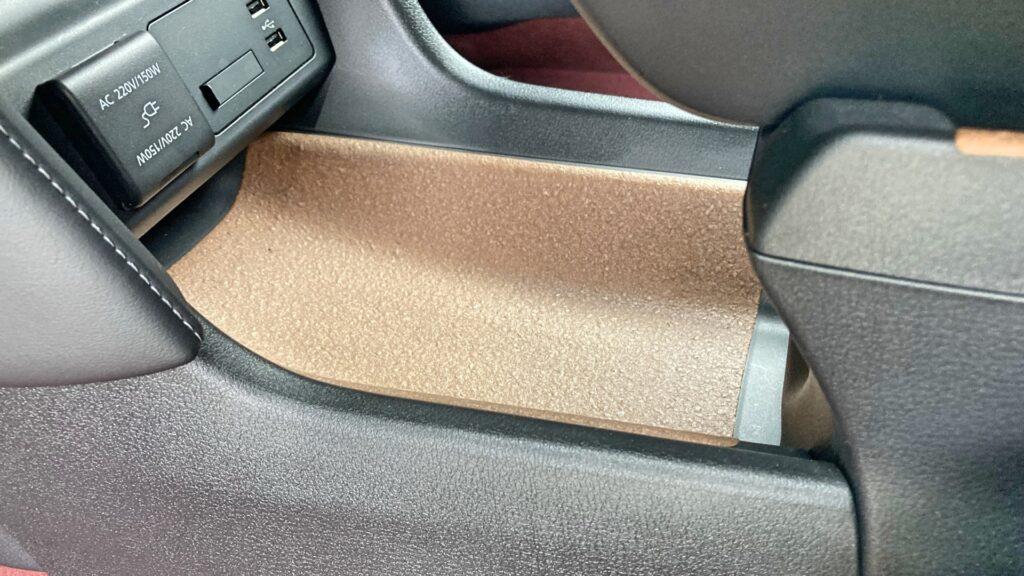
The MX-30 has one very interesting element and that is the door. A subtle reference to the RX-8 model and a major punishment for any parent who would like to drive their children here daily. The rear doors, which open backwards and have no center pillar, are not used by current Mazdas. This solution (supposedly) facilitates access to the rear seats, despite the relatively small rear doors. When parking, for example, in front of a shopping center or in a housing estate where other cars are parked next to it, it is quite difficult to get to the back, and I am not talking about placing a child seat. When closing, you have to be very careful not to accidentally close the back door first. A momentary inattention and the front door can catch it nicely in case of a strong impact.
A rather impractical and incomprehensible thing is the front seats, or their folding when getting in the back. The seat must be moved manually and possibly folded using the buttons if we are talking about the driver's seat. It is lengthy and if you don't have the position in memory, you have to always adjust the position behind the wheel. The front passenger's seat is a little better, here the seat can be folded down with a dedicated lever and also moved forward. But again, inexplicably, it is not possible to return to the original position in a simple way and it is necessary to manually adjust the seat again. Thumbs down for this…
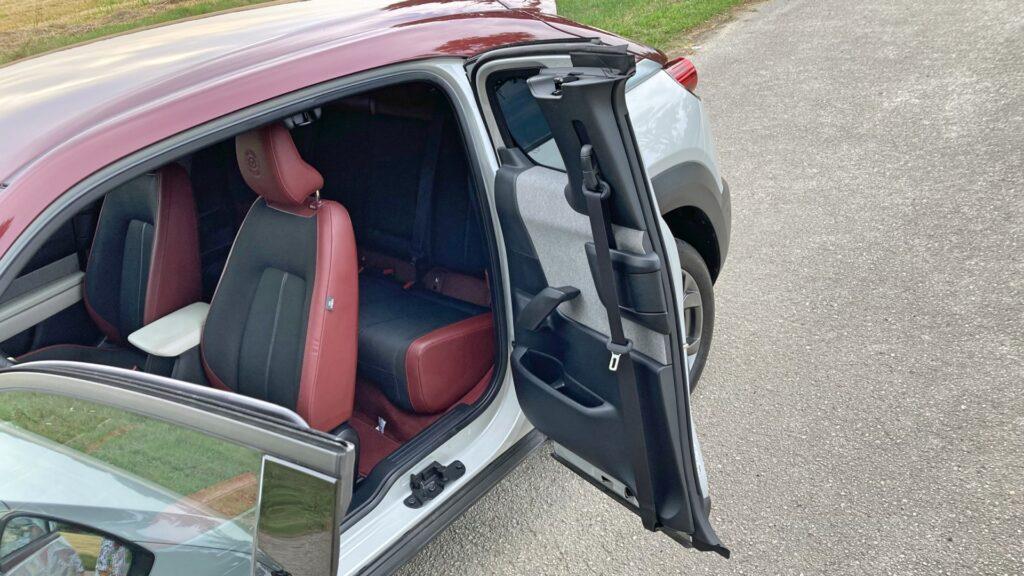
Infotainment is simpler and especially more intuitive compared to vehicles of other brands. It has standard connectivity features such as Android Auto and Apple CarPlay, through which the infotainment can be connected to the phone, for example to display Waze navigation or Google Maps from the phone. Everything is controlled by a rotary control on the right hand side, and after a few minutes it is much less stressful than "poking" your finger while driving at the display and taking your eyes off the road. Safety first.

Nevertheless, I was a little disappointed that there is not a little more "safety" here in the form of assistance systems. The competition is already rolling with second-level autonomy, and the electric Mazda received only an "ordinary" adaptive cruise control as a gift. Lane keeping is completely outdated and there is no hint of any steering wheel assistance. Here it would be appropriate to point out that if it is an electric car, then let it also have electric car gadgets. But the 360-degree camera, which finally has a decent resolution and progressive guidance lines, must be praised. But again – the MX-30 can't even park itself, and it has the equipment to do so…
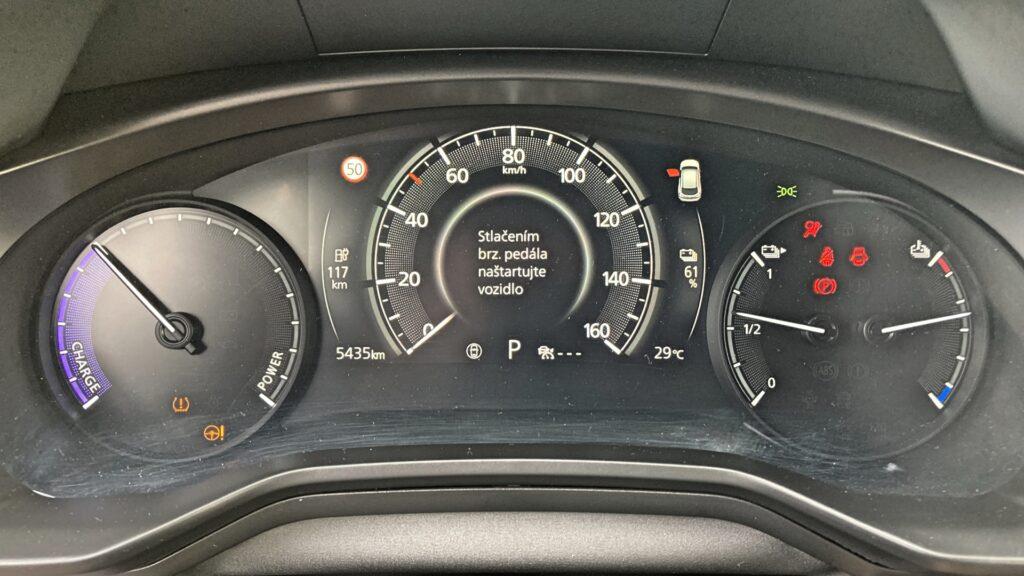
But there is more space inside than the shape of the body would suggest. The result is that even taller figures can sit behind them without problems, although their knees will already be resting on the seat in front of them. There is surprisingly enough headroom in the back, and four adults of average height should be able to sit comfortably here. However, the three passengers in the back would be like sardines due to the smaller width…

The chassis of the MX-30 is great. As already mentioned, the center of gravity is low and at the same time has an almost ideal weight distribution, thanks to which it offers really good driving characteristics in corners. At the same time, it is not a go-kart like, for example, Honda, and it will also offer very decent comfort. It is a kind of fine-tuned compromise between great driving characteristics in corners and comfort on broken roads. The power of 105 kW is not overwhelming, but the 140 hp is more than enough for a relaxed drive with the occasional brisk start.
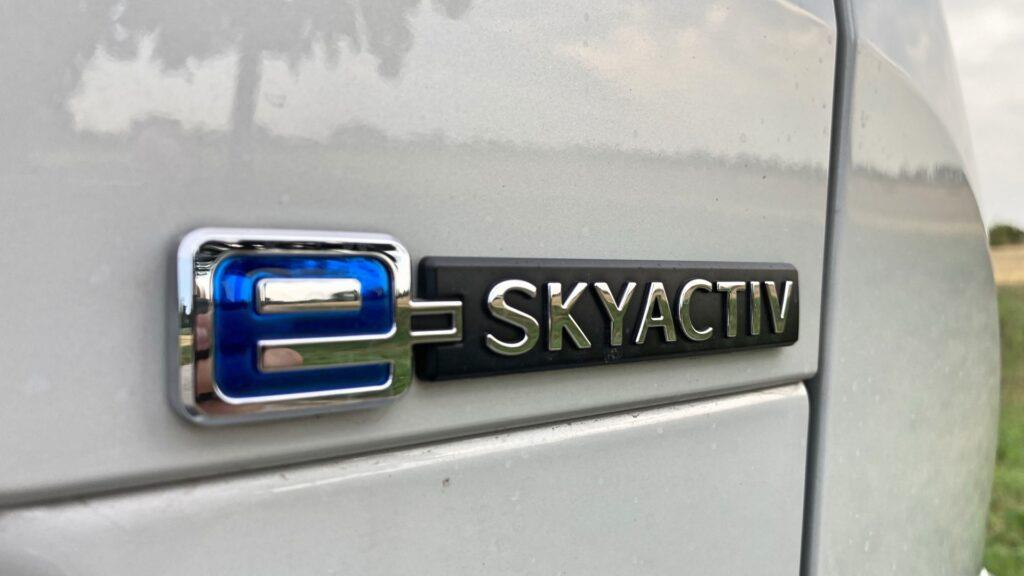
What I don't like very much is the consumption. It is partly disappointing for me. In urban mode and at district speeds of up to 90 km/h, the electric Mazda is relatively economical. However, with increasing speed, consumption increases directly proportionally. While in the city consumption was approx. 17kWh, on the highway it is already almost 25 kWh and more and that is a relatively high number. But I have to praise the regulation of recuperation using the paddles under the steering wheel, from full sailing to intensive braking, which helps with economical driving, especially in the city and districts, where the brakes are used more often. Once you get used to the system, it's a great helper and battery saver.
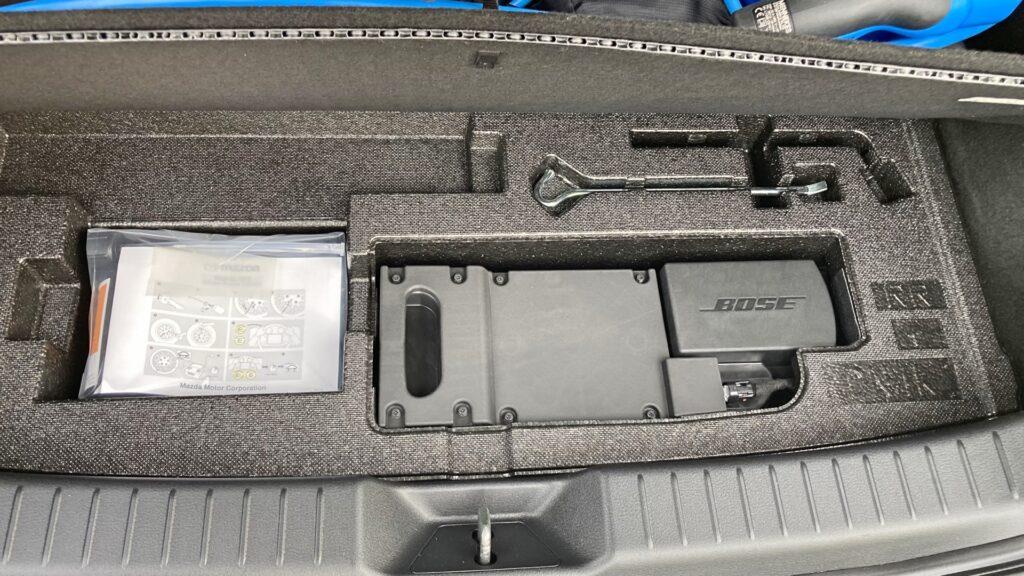
In my opinion, it is realistic to drive about 180 kilometers per charge when driving more calmly in the districts and the city, which is sufficient for city and suburban cars. The Mazda MX-30 is not designed as a car for long distances, and the automaker itself does not hide the fact that it is a vehicle mainly for urban and suburban use. It does not have a dazzling range, but smaller batteries also mean a lower burden on the environment during production, and the declared range is more than enough for the vast majority of people on normal daily trips. I simply connect it to the wallbox at home when I need it, and for long trips we still have the proven diesel. It should not be the main car, but a kind of addition to a larger family car.

The tested limited edition for the hundredth anniversary of the brand, in addition to the Premium package, adds elements such as: Headrests with embossed 100th Anniversary logo, burgundy carpets with 100th Anniversary logo, pendant with remote control with 100th Anniversary logo, center wheel covers with 100th logo Anniversary, a special 100th Anniversary emblem on the front fenders, bodywork in the unique color combination 100 Years Top Marron Rouge and interior upholstery in burgundy vegan leather/grey fabric…
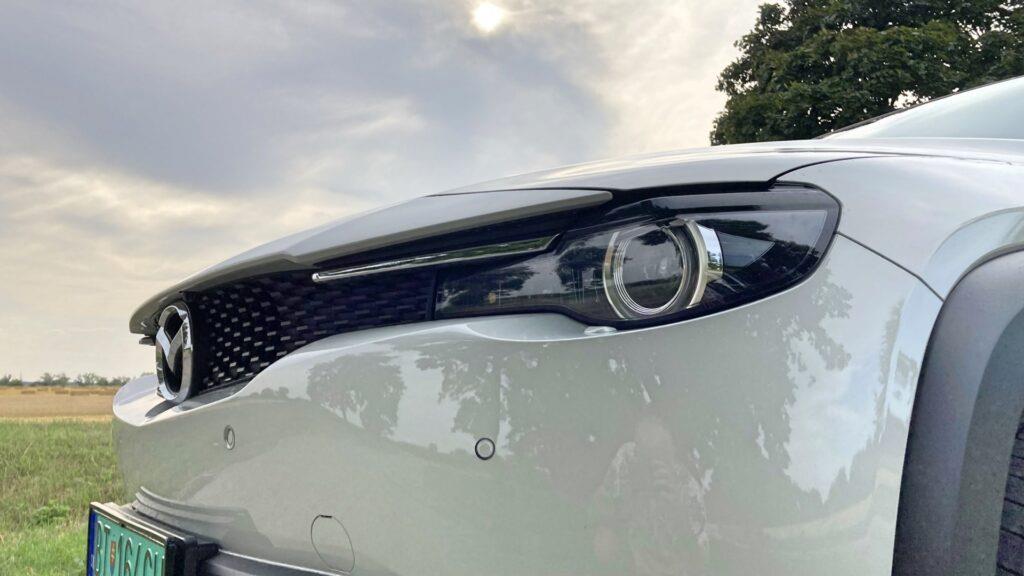
Mazda has managed to create an electric car that does not have an unnecessarily long range, thanks to a smaller and cheaper battery, and thanks to this, the car is available at a decent price. It is a car for normal daily driving, for example from work to work or for shopping and delivering children to kindergartens, schools and clubs. It repays its passengers with a cozy interior with perfect ergonomics and a balance between sporty driving characteristics and comfort.
| Technical specifications | |
| Electric motor type: | synchronous electric motor |
| Highest power [kW (k)/rpm]: | 107 (145) |
| The highest twist. torque [Nm/rpm]: | 265 |
| Maximum speed [km/h]: | 140 |
| Acceleration from 0 to 100 km/h [s]: | 9.7 |
| Consumption – station wagon [WLTP] [kWh/100 km]: | 19 |
| Luggage space [l]: | 341 |
| Battery capacity (kWh): | 35.5 |
| Curb weight [kg]: | 1,645 |
| Tire size: | 215/55 R18 |
| Length [mm]: | 4,395 |
| Width [mm]: | 2035 |
| Height [mm]: | 1,555 |
| Wheelbase [mm]: | 2,655 |
You can find more photos in the large gallery here: >>MAZDA MX-30<<

